by Roger D. Curran
In 1876, the New York Post Office introduced a set of handstamps that duplexed circular date stamps to ellipse cancelers. Thus began a trend in the U.S. that was to spread to all big city post offices and to many smaller ones as well. These handstamps were metal-faced, typically steel. They produced what are frequently referred to by collectors as “standardized” cancels because they all involved the same general design. Virtually all were struck in black ink. Large post offices favored these handstamps because they held up well under heavy use.
In this same year a countervailing trend emerged that was also to have major impact – the use of rubber-faced handstamps. These appealed to small town postmasters because they were inexpensive. Cancels from such handstamps have, of course, been popular with collectors due to myriad and often highly intricate designs that were created and to the fact that they were frequently struck in colored inks. The reason, incidentally, why colored inks were used is because black printer’s ink could not be used satisfactorily with rubber stamps. Colored inks, however, were also problematic in that, generally speaking, they could be easily removed from the stamps they canceled. The U.S. Post Office Department in 1878 specifically forbade the use of colored canceling inks unless their indelibility was equal to that of black printer’s ink.
I have been interested in early uses of rubber-faced handstamps and how they evolved. The late Arthur Bond, a noted student of 19th century U.S. postal markings, wrote that “the first practical mold and vulcanizing equipment for rubber stamps was invented by J.F W. Dorman, of Baltimore in about 1870.” 1 However, he went on to state that “Very few postal markings from rubber stamps are found before 1877, but in that year a great many made their appearance in a wide variety of forms, frequently including the county name, and occasionally the name of the postmaster. Obviously, such stamps were purchased by the postmasters.”2
It is not necessarily an easy task to determine whether a particular marking was struck from a rubber stamp. Often, it becomes a matter of judgement with no conclusive proof available. Here are some factors I take into consideration:
- Since most early rubber cancelers are duplexed, I look for any indication that one or more letters in the CDS have spread out under pressure; in other words, letters that are in some way larger than others which would indicate a pliable canceler face. This also applies to the CDS outer rim. If a rubber-faced handstamp was struck at an angle, the portion of the rim receiving more pressure will likely appear thicker than the rest of the rim.
- The presence of colored canceling ink is an important factor. Included also are inks that are greyish with a slight watery (for want of a better word) quality and sometimes a suggestion of color. These inks arose in the early 1880s.
- CDS letters with serifs are more common in rubber-faced handstamps than in metal-faced, especially so beginning in the 1880s. Also, any ornamentation in the CDS is much more common with rubber.
- Strikes from rubber stamps don’t show indentations on the cover from the CDS letters and numerals. Slight indentations are sometimes seen with metal strikes. In questionable cases I slide a finger over the CDS to judge whether a perceptible indentation is there.
- In the earliest rubber years, 1876 and 1877, the typical canceling ink colors, in my experience, are purple and magenta.
Several covers are discussed herewith. The earliest strike I have seen from a rubber-faced handstamp is the February 8, 1876 example from Normal, Illinois shown in Figure 1. Comparing the CDS and cancel strikes in Figure 1 with those on the Figure 2 cover, it appears a duplex handstamp was used with more pressure applied to the circle of wedges strike in Figure 2. Please note the double circles in the two CDSs which I believe represent a further indicator of having been struck from rubber stamps.
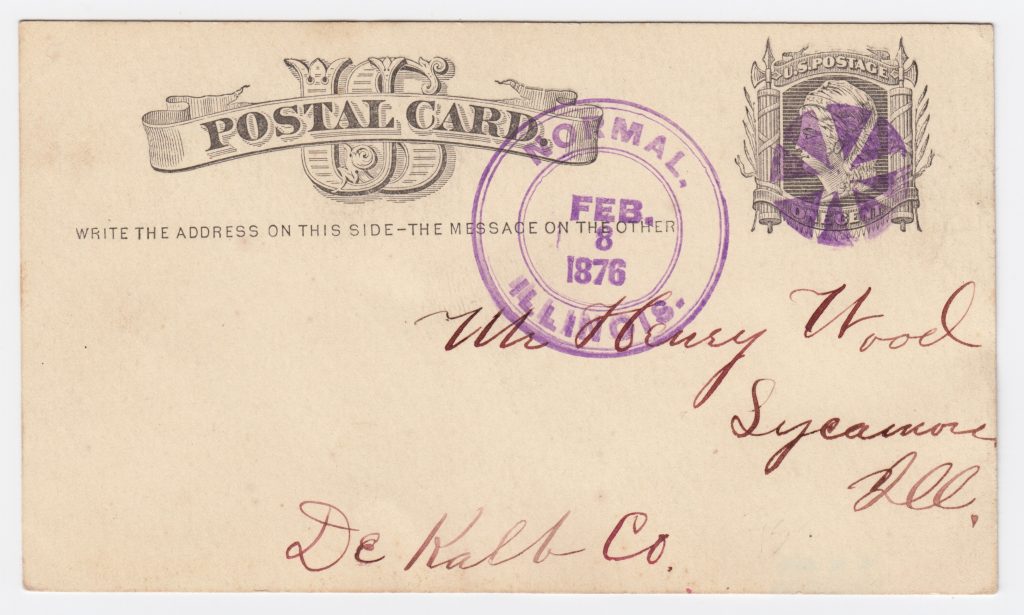
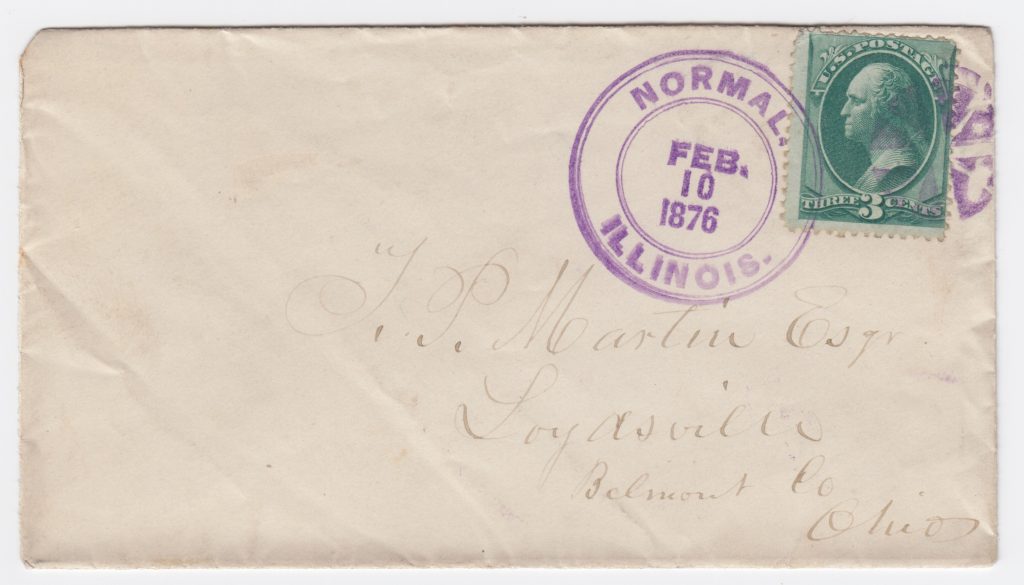
The card in Figure 3 postmarked at Mount Pleasant, South Carolina, is datelined “March 30th 1876” on the reverse. I think the simplex town postmark was struck by a rubber stamp because of the magenta ink color and the shape of the “Charleston County” letters. Also, the oblong shape ofthe CDS is much more characteristic of rubber stamps.
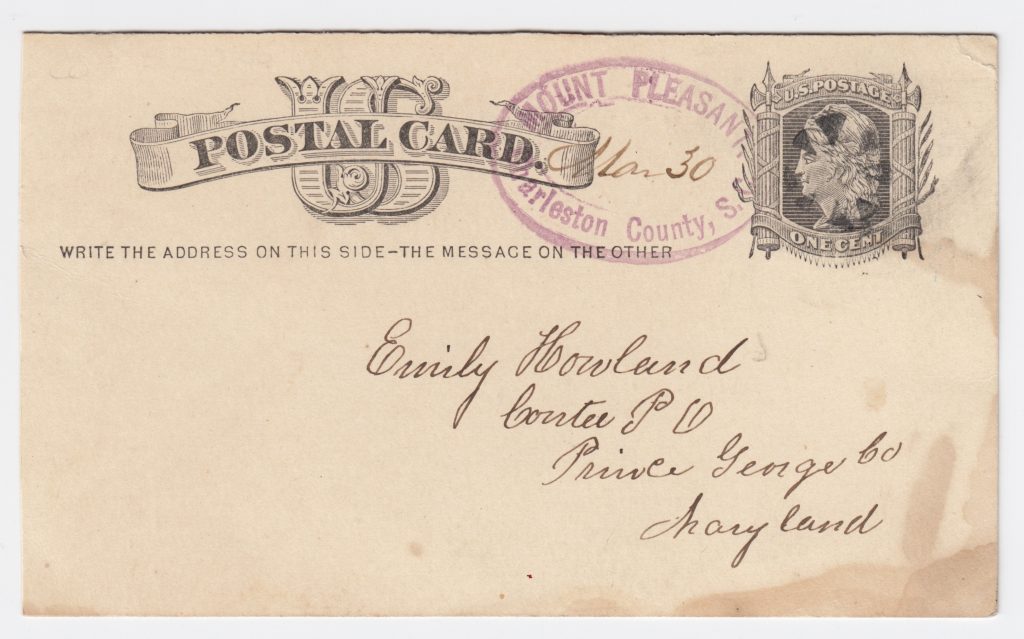
I believe the card in Figure 4, struck in an unusual blue ink, is postmarked Mantorville, Minnesota. The date is April 7,1876. The CDS letters have serifs and no indentations were detected. Also, the second “N” in “MINN.” is larger than the first “N”. I think the CDS is from a rubber stamp but have no opinion about the negative star cancel.
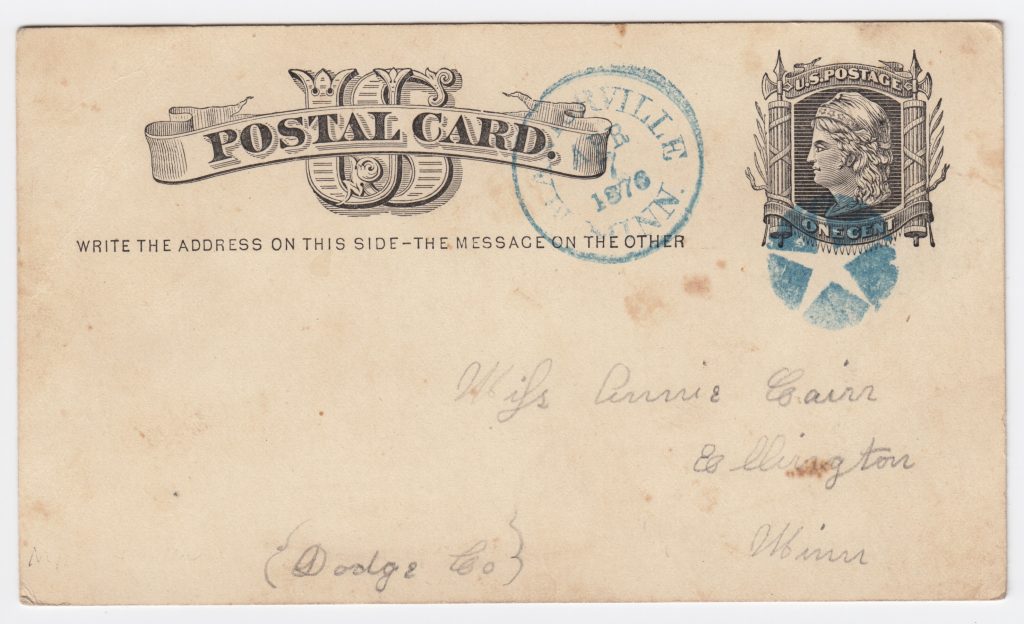
The canceling ink on the card in Figure 5 is a darker purple than the norm but may well be of the same general composition. However, there are indentations in the card from the “ALBIA” letters indicating that the CDS was struck from a metal device. The cancel may have been produced by a quartered cork placed in a ring holder.
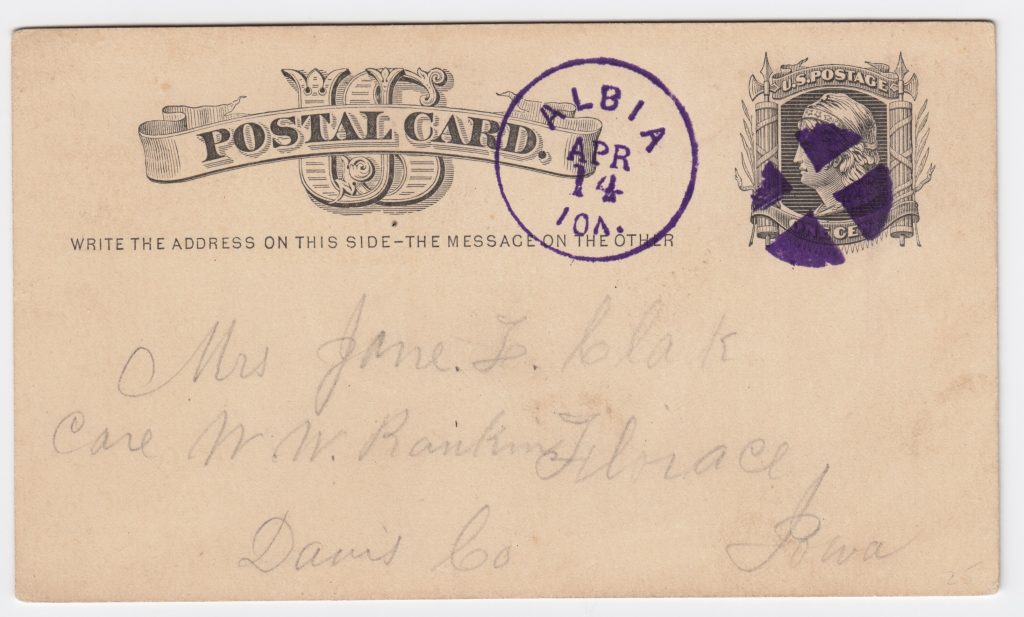
The cover in Figure 6, with markings surely struck from a rubber stamp, is interesting in a couple of respects. The cancel is an “OK” in a thin circle which makes it a very early “fancy cancel” from a rubber stamp. Second, there was no “City of Sherman” post office, at least as a Post Office Department listed post office, but there is a “Sherman” in Grayson Co., Texas which is an operating post office established in 1847.
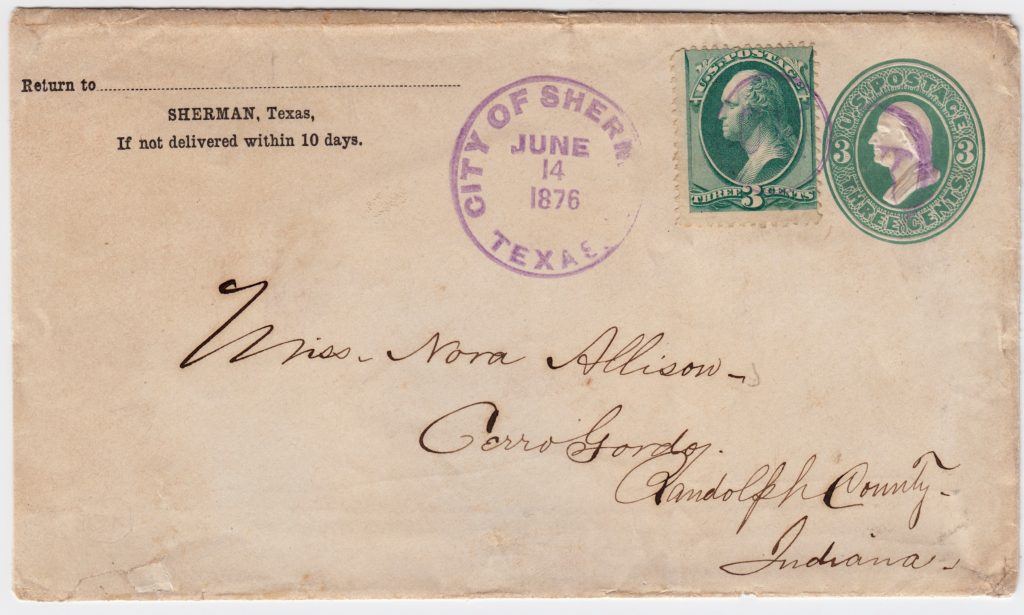
Figure 7 shows a card bearing an El Paso, Illinois postmark dated August 4. The card is datelined 1876 on the reverse. Magenta ink was used for postmark and cancel. The “4” in “AUG/4” is indented but none of the “El PASO ILL” letters show an indentation. The “A” and perhaps the “G” in “AUG/4” show slight indentation. This raises a question. Were the date slugs placed in the handstamp in such a way that they were raised a bit from the handstamp surface and, if so, were they made from rubber hard enough to create the indentations? If indentations existed from the PASO ILL non slug letters, we could reasonably say that the handstamp was metal faced but, in this case it’s a little more complicated.
Comment is invited. Figure 8 illustrates a cover postmarked E. Nodaway, Adams Co., Iowa dated November 30, 1876. East Nodaway is a DPO that operated from 1867-1892. Thanks to John Donnes who determined there was a faint crossed lines manuscript cancel on the 3c stamp. Given the double-lined outer circle ofthe CDS and the magenta ink, I believe it can be said with confidence that a rubber stamp was used.
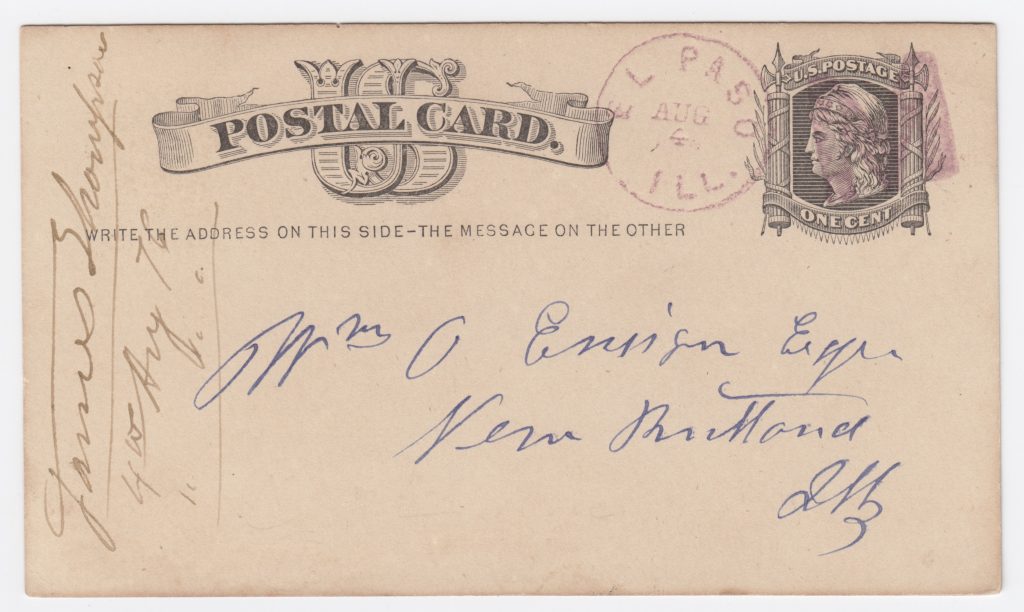
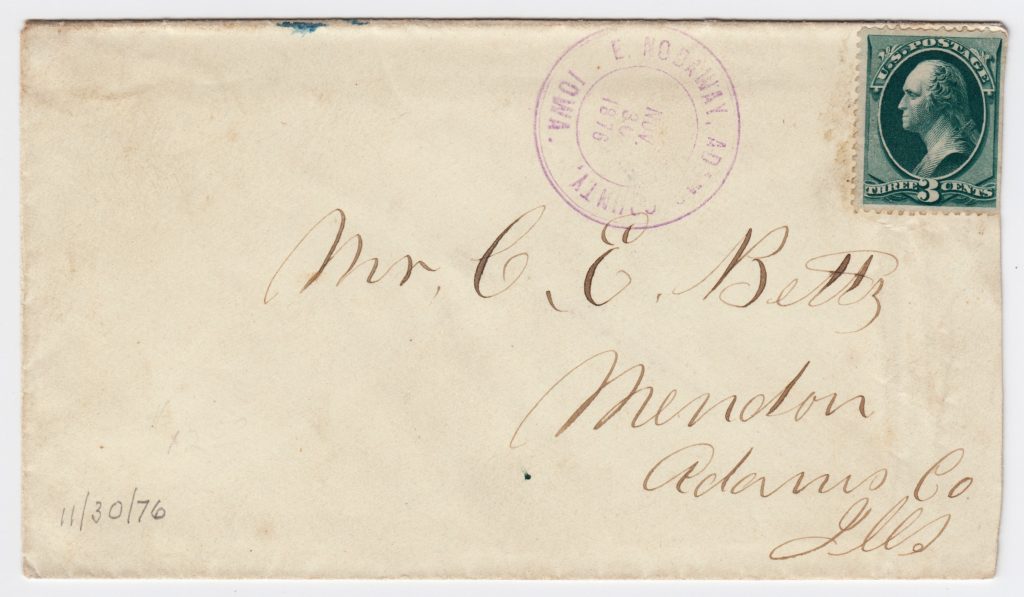
The cover in Figure 9 was postmarked Cynthiana, Kentucky on January 1, 1877. If the concentric circles canceler was duplexed, it was not aligned with the center ofthe Cynthiana CDS. The rectangular “PAID” marking, applied by the Hinsdale County Bank in Lake City, Colorado, appears in a magenta ink very similar to those ofthe Cynthiana markings. Both Kentucky and Colorado markings were surely applied by rubber stamps.
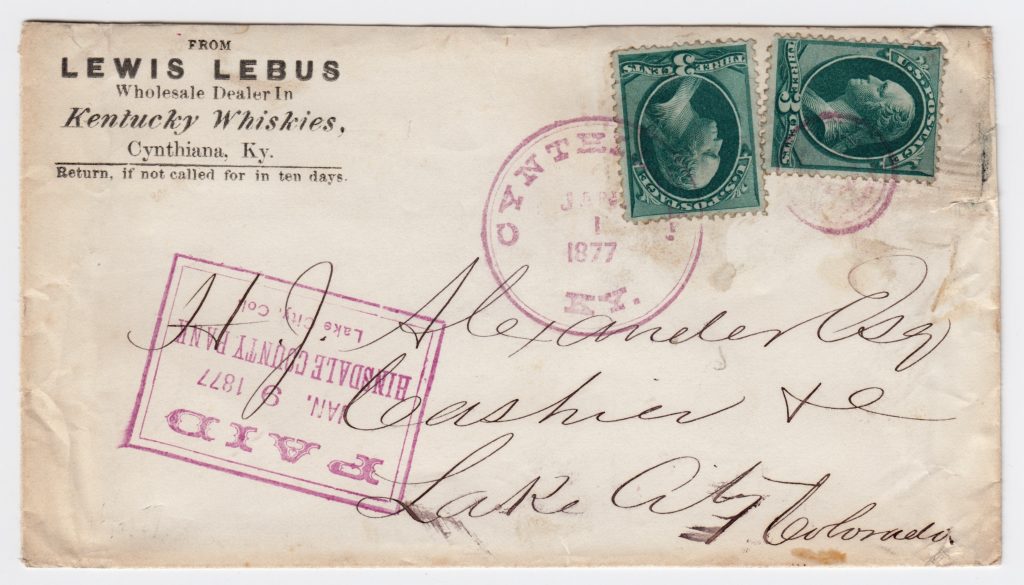
Figure 10 illustrates a cover postmarked at Hermitage, Missouri. The negative star cancel does not appear to have been struck from a duplexed canceler. I believe both markings came from rubber stamps. First is the purple ink. The presence of serif letters is also an indicator for the CDS. The overall manufactured look and thin circle are also factors for the cancel.
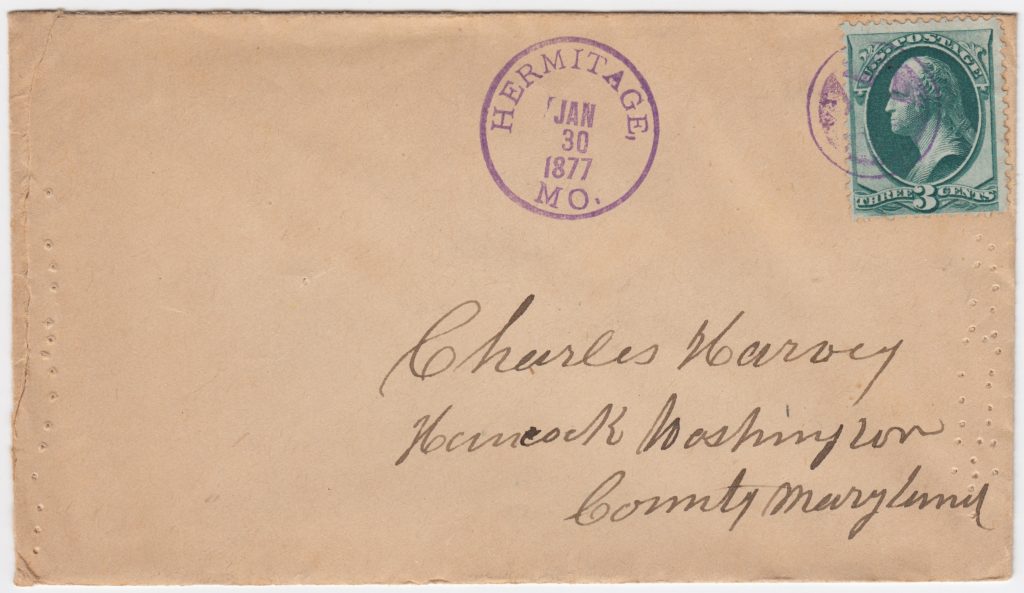
Readers are encouraged to send scans of additional covers mailed in the 1876 and early 1877 that bear or appear to bear rubber stamp markings. Commentary on any aspect of the above will also be welcomed.
Thanks are extended to Ardy Callender who reviewed the article in draft and contributed important information. ■
References:
- Bond, Arthur H., “19th Century Development of Postal Markings” as presented in The Postal History of Indiana by J. David Baker, published
by Leonard H. Hartmann, Philatelic Bibliopole, Louisville, (1976), pg.372 - ibid.


